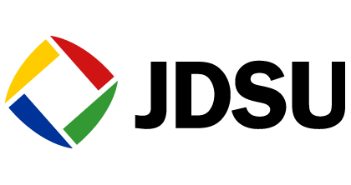In its first quarterly call since announcing that the company will split into two, JDSU reported revenue up about 1% year-over-year, while it narrowed its losses and exceeded its guidance.
JDSU had revenue of $433.6 million, with profits of $33 million on a non-GAAP basis and a net loss of $9.7 million on a GAAP basis. The company reported $429 million in revenue during the same period last year, with a GAAP net loss of more than $25 million.
President and CEO Tom Waechter said that the company’s efforts to diversify in non-telecom markets drove its performance during the quarter, and highlighted the growth in JDSU’s offerings for enterprise and commercial lasers. He also said that JDSU’s service enablement segment generated operating profit ahead of schedule.
The company is on track to split into two, which are referred to as SpinCo and NewCo until they have established names, by the third quarter of next year. NewCo will focus on network and service enablement, optical security and performance; and SpinCo will consist of JDSU’s commercial laser and optical products business. Top leadership has already been set, with NewCo retaining Waechter as CEO and JDSU CFO Rex Jackson as its CFO. SpinCo has a CEO-designate, Alan Lowe, and he has chosen Aaron Tachibana, JDSU’s VP of finance and global controller, as his designated CFO.
“The timing is right for both SpinCo and NewCo to sharpen their focus on growth opportunities as network scale to higher transmission speeds, 40G in data centers and enterprise, 100G in long-haul and metro, and move toward software base architectural changes, including software defined networks and networks functions virtualization,” Waechter said on the quarterly call.
JDSU currently has just over 5,000 employees. The company is expecting non-GAAP revenue to be around $445 million for the next quarter, which Raymond James analyst Simon Leopold called “optimistic.”
Leopold wrote that there are challenges for JDSU’s sales, including service provider consolidation affecting carrier spending, and the ramping of 100G optical networks likely to be pushed out until late next year. Leopold also noted that JDSU’s test and measurement business “struggles when carrier capex is restrained.” He said that JDSU’s focus on higher-margin embedded test in its service enablement area and its datacenter business is encouraging.
“We see JDSU’s separation as logical, but each of the new firms faces challenges,” he added. “The [network and service enablement] business faces growth challenges yet may offer good margins and cash flow. The [optical components and commercial lasers] business should grow yet has weak margins and losses.”

